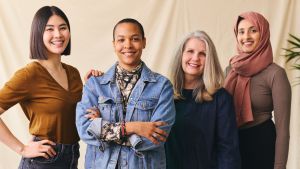After 27 years in corporate HR and diversity, Anise Wiley-Little was an expert on inclusive culture and the value of change.
After some personal events caused her to re-evaluate what she wanted to be doing, she realized it was time to move to the next chapter.
| Anise Wiley-Little |
|---|
| Current Position Chief Human Capital and Diversity Officer, Kellogg School of Management, Northwestern University Continue reading this and all our content with a Fair360 subscription.Gain company-wide access to our premium content including our monthly webinars, Meeting in a Box, career advice, best practices, and video interviews with top executives.MembershipsAlready a member? Sign in. |
“As executives, we know when it’s time to make a change I had a conversation with a close colleague who talked about having a broader impact and I said to myself that this work really can make a difference when you can reach many, many people,” she recalls.
So four years ago she left Allstate and now heads HR and Diversity at Northwestern University’s Kellogg School of Management, where she helps budding executives understand the business value and implementation strategies of diversity and inclusion.
“Kellogg is global and we build the world’s most successful leaders. They become ambassadors for the work we do all over the world. I couldn’t think of anything better than this,” she says.
A key way to teach the students to create inclusive cultures in their new workplaces, she says, is to show them a human-capital model at Kellogg that does exactly that. “Our goal is simple yet fundamentally bold to serve as a model for inclusive leadership while preparing others to do this as they go forward,” she says.
She has instituted a “People Vision” that started with realigning leadership from the traditional hierarchical structure to one that is inclusive. “We are now organized into Organization Performance Teams aligned with our business objectives. Although we only have one diversity goal for the organization “Integrate Diversity into all relevant business processes”. Given this one common goal, each of these Organizational Performance Teams have their own diversity goals imbedded into their work. This new structure pushes accountability deeper into the organization requiring inclusive leadership to be successful,” she says.
Since starting at Kellogg in 2014, she has worked on transforming the organization to have specific inclusive strategies for students, staff and faculty. For example, she says, she discovered that a weeklong student-diversity activity called Mosaic could be even be more inclusive if it focused on areas in addition to international culture. “We needed to have activities that were inclusive of everyone, such as LGBTQ people,” she says.
She also has been working with Kellogg business professors on research on diversity to see what new frontiers can be addressed, especially about the intersection of diversity and technology. And she plans to launch a Chief Diversity Officers Summit for corporate, non-profit and government leaders.
Coming Full Circle
Anise grew up in the Midwest, where her father was a finance executive with the Soil Conservation Service and the U.S. Department of Agriculture. Her family moved around a lot and, she recalls, “what shaped me was the interactions with my dad. I had an exposure to business that a lot of kids don’t get. I am the oldest and he guided me and navigated me into the career that I have today.”
She went to college expecting a career in the social services but found she could have more influence in HR. “As an HR professional, you can make a difference because the decisions you make have far-reaching impact,” she says.
She chose Allstate and had a successful career heading HR compensation when former CEO and Chairman Ed Liddy asked her to be the company’s first Chief Diversity Officer.
“He said: ‘I need you because you build strategy,'” she recalls.
Now, she says, “it’s almost like I’ve come full circle to do the work I was intended to do. I had a conversation with a student who wants to know how she can stay connected to the work we do here as she graduates. That’s exciting as she is a future corporate diversity ambassador.”
She believes the biggest concern these days is access. “When I think of people who have the right to enter an elite school like Kellogg, I think of how they get there. Do they have the right access to study for the Graduate Management Admission Test (GMAT)”
People from the majority, she says, can relate more easily to current executives. “They will be more confident and they can reach a person who will be a sponsor, who can make or break their career. It always comes back to access,” she says.


















